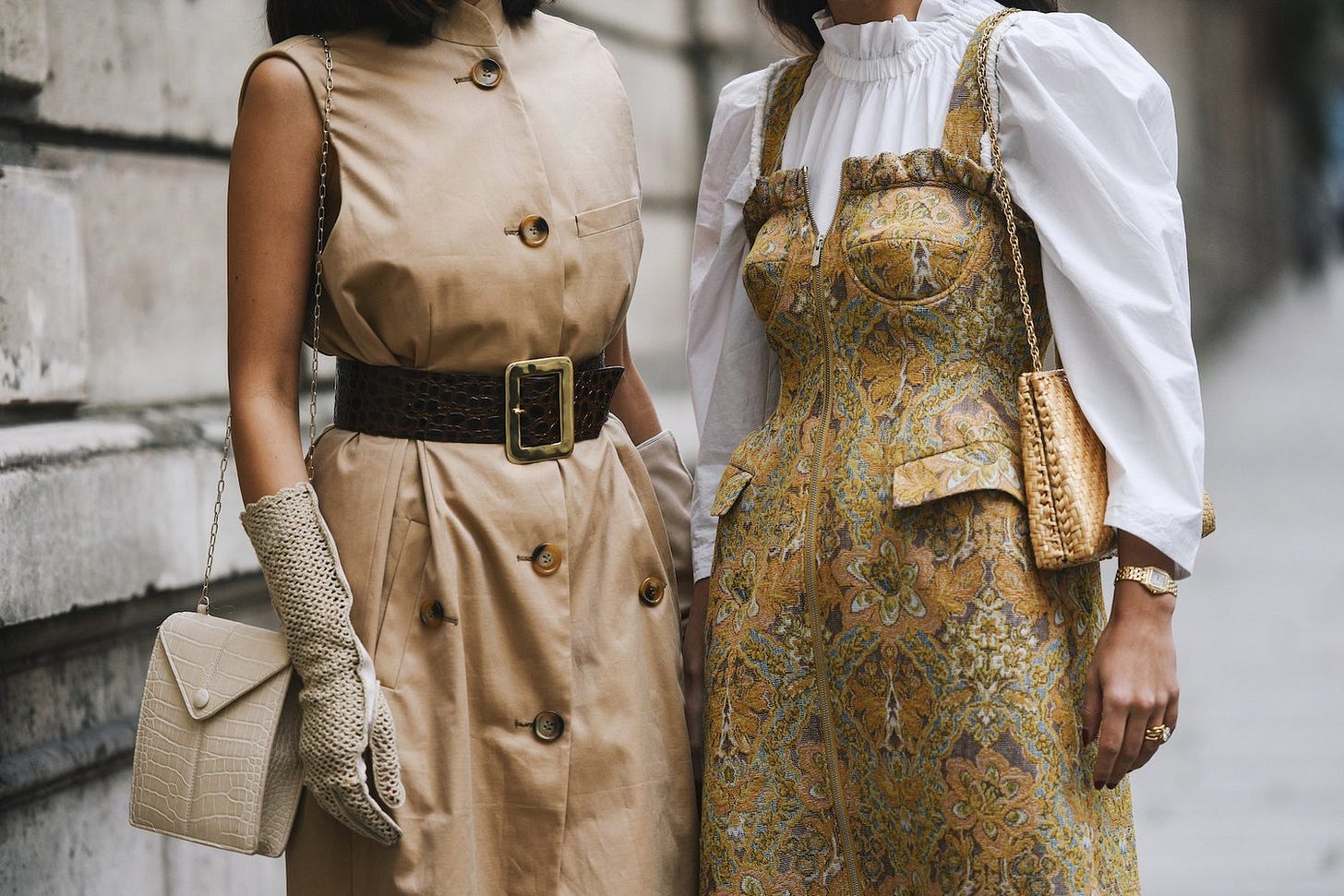Is Sustainable Fashion Waging War Against the Working Class?
Sustainable shops are closing. Resell programs are in full swing, but trends indicate fair fashion prices won't come down anytime soon. But why?
Time to Read: 3 min
It was rather difficult curating this season’s sustainable style recommendations according to its trends. Partially because of limited brand-provided sustainability reports and environmental impact, as recycled plastics are still plastics. Partially because of and/or their unethical scandals. Primarily because ethical and eco-friendly garment prices are slowly inching their way towards those of atelier ready-to-wear lines.
If you were to Google this occurrence, there are several articles detailing why sustainable fashion prices are so expensive. Anyone who participates in the fair fashion movement understands that ethically-produced clothes come with an expensive price tag. However, the hefty prices associated with these garments are just getting more exorbitant and astronomical. Post-pandemic inflation may be playing a role, yes, but it’s hard not to see there’s been a rise in sustainable brands shutting their doors.
In theory, label shutdowns could be due to industry prices increasing from an average of $100-$180 per piece to $250-$500 per piece depending on the brand, cut, production process, factory practices, wage agreements, and materials. The average working-class American consumer takes home between $34,248 and $51,480, with the “middle” class earning an average of $53,413 and $106,827, according to PolicyAdvice. There’s a stark difference between these income estimates, which don’t take into account racial, gender, age, disability, and immigration-based disparities, or worldwide averages; although this data was gathered in 2018-2021, these median salaries show the continuation of the class divide.
Long story short: Salaries aren’t mirroring skyrocketing prices. It’s becoming harder to find ethically made or sourced clothes/products that most folks can afford, even if they want or need to participate in the movement for health reasons or to reduce their toxin intake. After years of folks asking why sustainable fashion is so expensive, brands are starting to host their own “recycled” and “pre-loved” marketplaces. These in-house resell programs encourage consumers to send back their used pieces to receive discounts or store credit, giving brands the chance to compete with thrifting outlets. Some brands are using these programs as a ploy to “introduce” fair fashion to consumers seeking affordability. However, forty-dollar discounts and credits certainly won’t be enough to make a dent in $180-$500 garments.
The truth remains: The majority of people, who reside in the working class, cannot afford garments advocating for the fair wages of others—oh, the irony! If those in the majority class can’t afford the pieces that demand corporate responsibility and better of the fashion industry, then how does product move? How are the fair treatment, pay, and working conditions for garment workers being supported? How can everyday folks “vote with their dollars” and demand a production cycle that’s kind to the earth?
It begs the question: Are social good and impact brands skimming some off the top, essentially engaging in their own perceived moral version of price gouging and fairwashing to stay alive? Or are they deliberately trying to appeal to higher-income individuals?
As an ethical fashion stylist and long-time supporter of the cause, it makes me wonder if the sustainable fashion movement is getting hijacked to become a status symbol for the few; it’s getting to the point where we must ask ourselves if it’s becoming an exclusionary, classist, postural movement and expression preserved only for the middle-to-upper classes. We must ask ourselves if the movement, too, is becoming more about putting profits before people and the planet in a softly veiled way.




